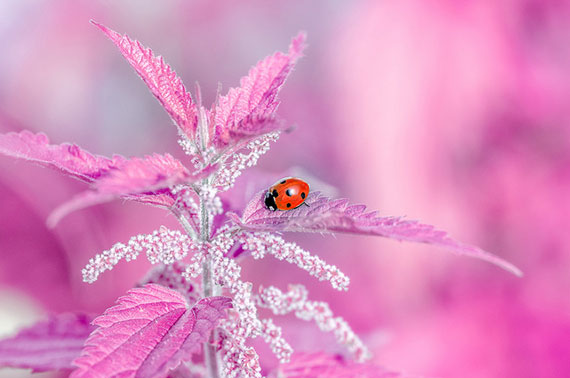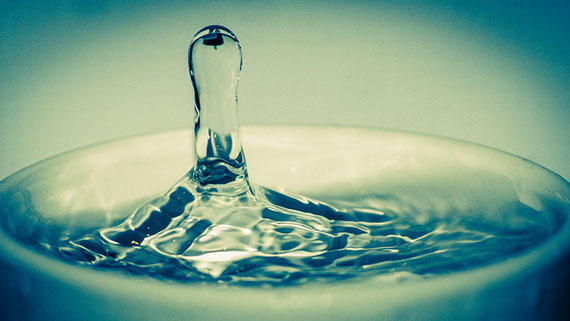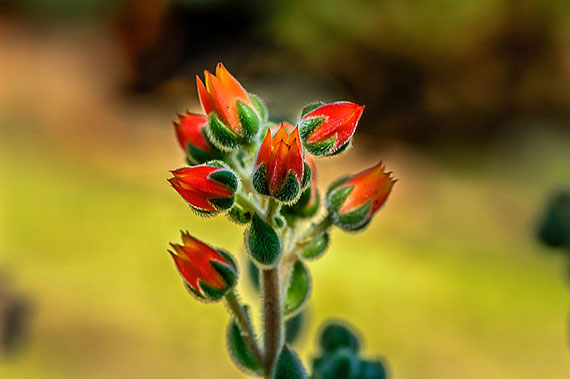Macroscopic photography offers photographers a unique view of the world to explore with an unlimited amount of color, texture, and physical architecture. Macro photography is magnified photography, which is used to produce an image that is larger in the film plane (or digital sensor) than in real life.

Photo by Albert Vuvu Konde; ISO 200, f/5.0, 1/800-second exposure.
Macro Photography on a Point & Shoot
Point and shoot cameras are a line of cameras popular with beginner photographers and suitable for everyday photography.
Attach camera to tripod. Focusing on an image close up can be difficult with certain models of camera. Any movement can bring the photograph out of focus. For best results, attach the camera to a tripod.
Select Macro Mode. Macro mode is typically a little flower in the shooting modes. When selected, it causes the camera to focus on an object closer to the lens than normal. In addition, macro mode will also increase the size of the aperture, bringing the subject into closer focus while leaving the background in the distance.
Zoom-In on the Image. Using the camera’s zoom feature, bring the image into focus on the view screen.
Set Flash (or not). Use of a flash with a point and shoot camera is purely personal preference. Macro photographs require a certain amount of light to remain clear and in focus. Unfortunately, it is difficult to control the flash on a point and shoot. For professional results, wait for a bright day with lots of natural light to take the photograph.

Photo by Nicholas Erwin; ISO 800, f/5.6, 1/6400-second exposure.
Take the Shot. Once shot has been lined up and in focus, double check the view screen and take the shot.
Try experimenting with various settings, different apertures and compositions to see what works best.
Macro Photography on a DSLR Camera
While point and shoot cameras may possess excellent macro capabilities, for optimal results a DSLR camera will generally out-perform point and shoot. The reason for this is because DSLR cameras allow various attachments for special purpose macro lenses.
Attach Appropriate Lens. Attach the appropriate lens following the manufacturer’s recommendations. Some cameras have special accessories specifically with macro photography, these attachments allow the photographer to enlarge the subject and/or decrease the minimum focal length.
Set Camera to Macro Mode & Select Aperture. Place the camera in macro mode, oftentimes some models of cameras will not allow any other adjustments without this mode being selected. After the camera has been placed in macro mode, select a small aperture (it’s a big number) for a large depth of the field, which places everything into focus, or a large aperture (small number) if focusing on the main subject. In most situations, it’s best to select a shallow depth of field, so select the largest aperture possible.
Set Flash. Having some artificial light in macro photography is important. Fortunately, most cameras come with their own built-in light meter. Choosing a time of day when there is plenty of natural light is the cheapest way of producing high quality photographs. Alternatively, the harsh light of the flash can be diffused by applying tissue paper or cello tape over the flash. Another more expensive option would be to invest in a reflector.

Photo by Paul Saad; ISO 100, f/7.1, 1/200-second exposure.
Place Subject into Focus. If the camera allows manual focus, select this option and focus the image manually.
Take the Shot. Once shot has been lined up and in focus, double check the view screen or through the eyepiece and take the shot.
About the Author:
Graeme is writing on behalf of Steven Brooks Wedding Photographer London & Wedding Photography.
For further training on macro photography for beginners, here is a helpful video tutorial:
This is a quick introductory lesson to macro photography and should help beginners get started with a few useful tips and tricks.
Like This Article?
Don't Miss The Next One!
Join over 100,000 photographers of all experience levels who receive our free photography tips and articles to stay current:






A little disappointed in the mis-leading information regarding the link to :Dirty Little Photography Tip”. All that link was, was simply a link advertising your newsletter. Or, is there a problem with the link?
Sorry I meant an HS20 EXR not GS
I am curious with your camera classification, I use a Finepix GS20 EXR, it is not a point and shoot nor a DSLR.
sounds like what i need..what camera did you use?
Great article by Graeme Knights. Macro photography has always fascinated me and although I have only just recently acquired a true macro lens (Canon EF 100mm f2.8 IS macro) it wasn’t until I bought a Novoflex Castel-XL focusing rail that my images came to life. Sometimes I could get away with simply mounting my camera (Canon 5D mkII) on a tripod and take some really good shots but when you really get close no matter how hard you try the image isn’t quite right. Thats where using a strudy tripod,focusing rail,magnifying the image in live view and using a remote shutter release really pays off big time with razor sharp images. Making really small things bigger then life is a fun challenge.